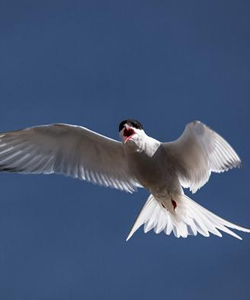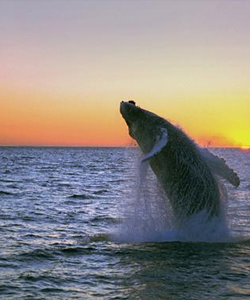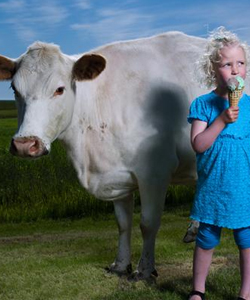
Flora and Fauna
Flora
Although geographically small Iceland comprises a large variety of different ecosystems. In one day you can pass from the icy world of snow capped mountains and glaciers to desolated deserts, sparkling waterfalls, moss covered lava fields, alpine forests and vast black volcanic sand beaches. Although three fourth of the country is barren of vegetation the remaining quarter is home to a rich variety of plant species. This richness is not always obvious to the visitor's eye. Iceland's plants are sympathetically modest.

Trees
Let's take the trees for example. Yes, there are! Iceland has native trees, mostly (dwarf) birches and willow trees. You haven't seem them? Well, that's because you looked UP. There's a famous Icelandic saying that describes it well: If you get lost in an Icelandic forest: stand up.
Icelandic trees tend to grow rather left and right than up, hardly ever reaching the height of your knees. They seem in fact more like bushes. Visitors for whom birches and willow trees are common sights in their home countries generally don't recognize them when coming to Iceland, even when pointed to.
In theory trees in Iceland can grow up to “normal“ height (15 m) like they do in other parts of the world at similar or even more northerly latitudes. The cold only slows down the plant's growing process, taking a tree way longer to reach „proper“ size. The main reason for the lack of forests in Iceland is: the human.
Before the arrival of the first settlers in the late ninth century up to 40% of the country's surface have been covered with trees, mostly birches. But wood was as essential to the Vikings as it is to us nowadays. Trees were logged, one by one, the wood used mostly for building and as firewood. Besides, the early settlers burned large parts of shrubland to turn it into grazing grounds for their ever hungry sheep. Since crispy new tree sprouts are on top of a sheep's menu the trees had no chance to grow back.
Once trees and shrubs gone erosion set in, the wind blowing away the exposed soil. Natural regeneration had become almost impossible.
In the early 20th century the first attempts of reforestation were made followed by a series of projects throughout the country, continuing until today. The species planted most was/is the native birch but also other wood types are experimented with. Especially conifers like pine trees and larch have been planted with great success.
The fact if non-native plants should be introduced to the Icelandic landscape in the first place has caused some dispute – regarding trees and also other plants like the lupine. Lupines decorate vast stretches of Iceland's famous Ring Road with its violet and pink flowers, often being the only coloured spot in an otherwise black and green uniformity. The lupine has been introduced to prevent erosion and enrich the soil with nitrogen. Which it indeed does. As well as spreading uncontrollably, competing (and winning) against local plants like mosses and lichens. Because of its bitter taste it can't be used as sheep or cattle fodder neither. Experiments are currently undertaken to breed a lupine variant more to the picky sheep's taste.
Mosses and lichens
The country's real vegetable attraction, though, is one that goes unnoticed by the majority of the visitors: the huge variety of mosses and lichens, hardly found in any other part of the world. Mosses are usually the first organisms to conquer the barely cooled lava after a volcanic eruption preparing the ground for other plants. They colour-range from white to grey, brown, red, up to all shades of green. In some parts of Iceland a certain moss type of a bright fluorescent green colour creates a bizarre contrast with the surrounding dark black lava giving the landscape a surreal, almost extraterrestrial look.

Fauna
Birds

Iceland is a heaven for bird watchers. Millions of migratory birds visit the island every year during summer to breed while feeding in the rich waters of the surrounding ocean. The star among them is for sure the Puffin (Fratercula arctica). It's clown like aspect is partly due to his flashy multicoloured peak but also to it's awkward behaviour on land. Nothing more hilarious than the sight of a Puffin about to land, his bright red feet stretched forward, wiggling and waggling like he's never done a similar manoeuvre before in his entire life. He then lands - pluff! - on his plain stomach, not loosing one single of the dozen fishes in his peak.
The steep cliffs of the Vestmann Islands in the South are home to the biggest Puffin colony in the world. Puffin colonies are also found in abundance in the South and East of the country.
Another notorious aviatic summer visitor to Iceland is the Arctic Tern. It's famous not only for covering the longest distance of any bird species on its migratory moves between the northern and southern hemisphere but also for its aggressive behaviour. Get close to a colony of breeding Arctic Terns and you will in no time find yourself being attacked by a flock of heavily armed flying vessels. Angry Birds. Literally. Even polar bears way up north in search for a delicious bird egg to brighten their monotony seal diet usually have to throw the towel in the face of a tern attack. If you have the mischief of experiencing the above described situation first hand hold something, e.g. your hat up over your head (on a hiking pole, if at hand). Terns go for the highest point of the body.

Whales
Iceland is also one of the best places in Europe for whale watching. The waters around the island are rich in krill, a whale's favourite dish. Up to 23 different whale species can be spotted. Common are the tiny minke as well as the gigantic humpback whale, blue whales, orcas (killer whales) and also porpoises and dolphins. Best time to spot them is in summer, between May and September. It's not improbable to get a glimpse of the giant sea mammals already from the shore but you heighten your chances notably by taking a boat tour out onto the open sea.
Join our xxxx tour and go on a whale watching tour near Husavik in the North, one of Iceland's best whale watching places.

Unfortunately, tourists with their cameras are not the only ones out after the impressive sea giants. Commercial whaling has always been a controversially discussed topic in and outside the country. Iceland has from its foundation been involved into back and forth negotiations with the International Whaling Commission, adhering to the ban on commercial whaling in 1992 (in theory) and (in practice) ignoring it. In 2006 it officially went back to commercial whaling, regulated by quotas. Almost all whale meat is exported to Asia, most of all to Japan.
Fish
The waters around Iceland are rich in fish. No wonder the fishing industry is the country's biggest economic sector (although prone to be overtaken by tourism in the coming years). Fear for the exclusiveness of their fishing grounds is one of the mayor reasons for the Icelanders' reluctance of joining the EU.
Main catches are cod, Arctic char, halibut and catfish. Putting the fish to dry has been the most common mean of preservation since the time of the Vikings. Dried fish is still a big export product. Wooden structures laden with fish bodies (and heads...) dangling in the sea breeze are a common sight throughout the coastal areas of the country.
But fish is not only found in abundance in the sea but also in the country's countless rivers. (Fly-) fishing has become a popular pass time among locals and tourists alike. Most common catches are salmon (June - October) and trout (April - October).

Land mammals
Regarding land mammals Iceland's wildlife is not as abundant as the one in sea and air, let alone exotic.
The country's probably most popular land animal is a domestic one: the Icelandic Horse.
Of Mongolian origin it has been brought along by the first settlers from Scandinavia. Its small size and compact figure makes it very apt for the countries harsh climate and difficult terrain. Animals stay outside year round. The Icelandic horse is the only race in the world with five different paces. One of them, the "Tölt" is very comfortable for the rider to sit, being one of the reasons for the popularity of the horse also beyond the country's borders.
Icelanders are very proud of the fact that the race has been kept pure for over 1.000 years. To preserve this pureness and to prevent the introduction of infectious diseases (against which the isolated animals had no chance to develop antibodies) the import of horses to the island is prohibited. Icelandic horses that leave the country may never return.

Likewise an immigrant to the island is the reindeer. From the early 18th century on there have been several attempts to breed and keep reindeer in the way the Sami in Europe's North do. With little success. Part of the animals usually died already during transport, very few survived their first winter. In the rare occasions that the reindeer population thrived the farmers started to complain about the animals eating away a moss type that in former times was forming an essential part of the human diet.
It's been a few dozen years, though, a stable reindeer population has established itself in the highlands of the East. The idea of herding them in the Sami way had been abandoned, not the idea of eating them. Reindeer hunt has become a popular pass time among locals and foreigners, reindeer meat is on the menu of almost all Icelandic restaurants (see also “Food” section [internal link]).
Another introduced mammal is the mink. Mink farms were established on large scale in Iceland in the middle of the 20th century. Some individuals escaped and unlike the recalcitrant reindeer proliferated happily ever after becoming a notorious nuisance for farmers and a serious thread for breeding bird colonies in some parts of the island.
The most prevalent land mammal is though the omnipresent sheep. It has been introduced to the island already by the Vikings. During the summer months mother sheep with their (curiously always two) lambs roam freely in the mountains. The annual sheep gathering in autumn is a big national event.
Sheep are also the provider for the base material for Iceland's famous „lopapeysa“, the (still mostly) hand knitted Icelandic woollen pullover with its typical ornaments. Despite having become a favourite tourist souvenir it's still (or again) very popular among locals, especially young Reykjavik hipsters.
The wool is more a by-product, though. The animals are mostly kept for their meat which you find in large variations on the menus of Icelandic restaurants. Have a look in our “Eating & Drinking” section.
The only authentic Icelandic land mammal is the shy Arctic fox.

Links
Flora
About the lupines: http://news.mongabay.com/2006/0724-tina.html
Whales: http://www.icewhale.is/whales.htm
Fishing
http://www.veidikortid.is/English
http://www.fisheries.is/